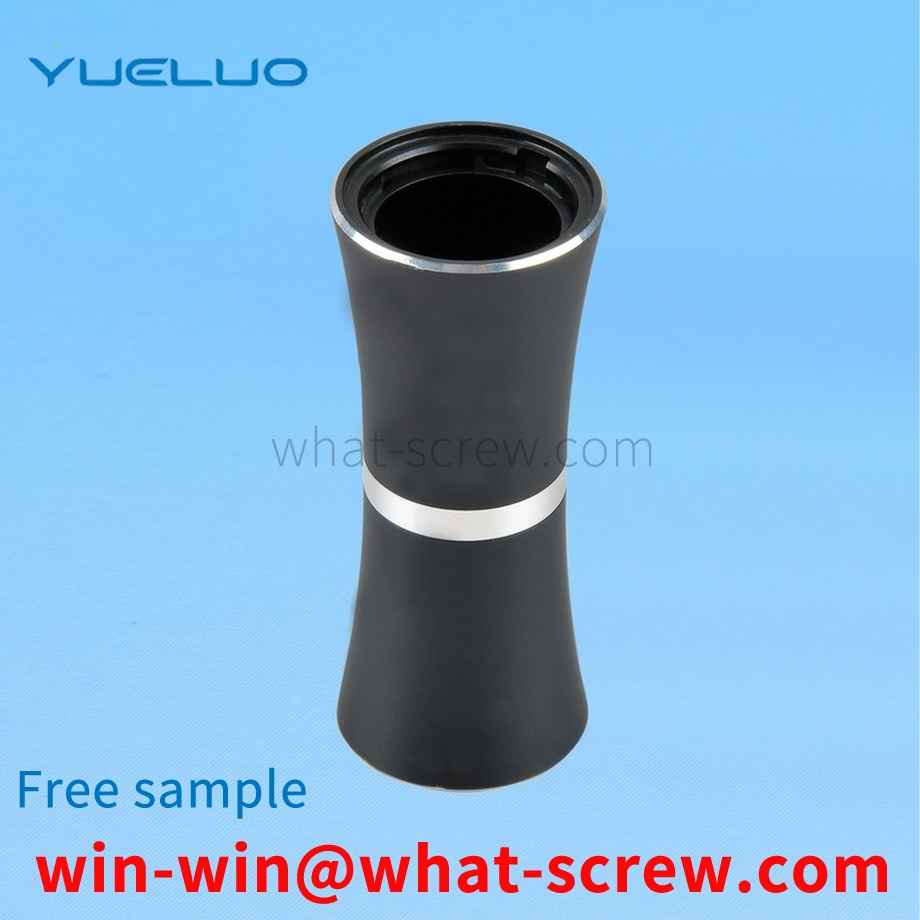The circlip lifting and tightening mechanism includes a lifting mechanism and a tightening mechanism; the lifting mechanism includes a lifting cylinder and a ball screw; the output shaft of the lifting cylinder is connected with the ball screw; the ball screw drives the tightening mechanism to achieve up and down move; the tightening mechanism includes a tightening motor, and the output shaft of the tightening motor drives a pinion sleeved on the output shaft to rotate; the pinion drives the largest gear meshed with it to rotate, and the largest gear is driven by The second largest gear meshed with it rotates; the diameter of the first largest gear is the same as that of the second largest gear; the lower ends of the rotating shafts of the first largest gear and the second largest gear are equipped with rotating discs, and each rotating disc is fixedly installed A probe; two probes can be inserted into the two holes of the circlip at the same time, and the circlip can be tightened or loosened as the motor rotates.
A T-shaped grounding bolt comprises a connection platform, a hexagonal bolt is welded below the described connection platform, and the lower surface edge of the described connection platform is provided with a barb.
Supporting T-bolts for pre-embedded channels, including hot-rolled pre-embedded channels, the lower part of the pre-embedded channel is provided with a longitudinal opening, and the head of the T-bolt enters from the opening and is clamped in the pre-embedded channel. There are plane teeth at the connection between the buried channel and the T-bolt, and the T-bolt has a tooth-shaped structure matched with the plane teeth. The direction of the teeth is parallel to the slotting direction, and the tooth-shaped cooperation achieves anti-slip effect. However, when the nut tightened on the T-bolt becomes loose, it will cause the T-bolt to move into the embedded channel and lose the toothed fit, thus changing the fixed position of the T-bolt in the embedded channel.
Self-tapping screws were introduced into the industry in large numbers in 1914. The earliest design (essentially imitating a wood screw) was a thread-forming screw made of hardened steel with an A-ended end, mainly used to connect sheet metal channels for heating and ventilation systems. Therefore, it is also called: sheet metal screw. By the end of the 1920s, with the widening of the market and new applications, emphasizing new designs, its application performance was widely improved. The following introduces the four different stages of the development of self-tapping screws in 40 years: thread forming self-tapping screws, thread cutting self-tapping screws, thread rolling self-tapping screws and self-drilling self-tapping screws. 1. Ordinary self-tapping screws (thread forming self-tapping screws) Ordinary self-tapping screws are a direct product of early sheet metal screws. The principle is: when screwing it into a prefabricated hole, the internal thread connected to the screw is formed by the displacement of the material around the hole and the material is pushed into the space between the threads. 2. Self-cutting self-tapping screws (thread cutting self-tapping screws) Because ordinary self-tapping screws are formed only in very thin threads. And it can be easily realized on materials with good toughness. Develop and expand the use of self-tapping screws to thicker sections and harder, brittle and other materials with poor deformability. In this way, the self-cutting self-tapping screw is developed: a cutting groove or cutting edge is machined at the end of the screw shank. When this kind of screw is screwed into the prefabricated hole, the screw acts as a tap and actually cuts out the thread that connects with itself. 3. Self-Extrusion Self-Tapping Screws (Thread Rolled Self-Tapping Screws) In the early 1950s, fastener engineers began to recognize the potential advantages of self-tapping screws as structural rather than just lightly loaded attachments. This has led to the development of a new self-tapping screw thread rolling self-tapping screw (self-extrusion self-tapping screw). According to the design principle of cold forging taps, the thread and end are specially designed for this kind of screw, so that the screw can be formed by applying intermittent and periodic pressure on the crest of its thread instead of on the side of the entire thread. Internal thread for connection. By concentrating and limiting the forming pressure, the pressurized material next to the hole is made to flow more easily and to better fill (squeeze) into the flanks and roots of the thread of the self-tapping screw. Since the frictional resistance of screwing in is much lower than that of ordinary self-tapping screws, threaded rolling self-tapping screws (self-extrusion self-tapping screws) can be screwed into thicker sections. At the same time, it has better screw control and tightening torque, and greatly improves the connection strength and overall firmness. The engineering standard of this kind of self-tapping screw stipulates that the selection of materials, the mechanical properties of heat treatment and the working performance should be strictly controlled. 4. Self-drilling and self-tapping screws (self-drilling screws) People have done statistics: Among the ten expenses that constitute the total assembly cost, the highest one includes the processing of holes. In practical applications of self-tapping screws, prefabricated holes need to be processed. Moreover, in order to make the prefabricated holes have good effect in practical application, the size of these holes must be controlled within a fairly strict range. In the early 1960s, self-drilling and self-tapping screws appeared. A major step forward in reducing assembly costs by eliminating the need to machine prefabricated holes. In general, self-drilling and self-tapping screws realize drilling, tapping and tightening in one operation. These are the four main stages of self-tapping screw design and development. In addition, two newly developed products are also worthy of introduction. Both are screws with a special thread type. One is designed for plastic and other low-strength materials; the other is used in the construction industry to connect cement wall panels, so it is also called wall panel self-tapping screws.
According to the design of the screw washer 110 , when the metal piece 120 and the metal piece 130 are disassembled, after the screw 100 is loosened, the screw washer 110 is often easily dropped or lost, causing trouble for maintenance. Especially when replacing parts at the user end, if the screw washer is loose, it cannot ensure that the user can install it correctly; if the screw washer is lost, it is necessary to purchase new parts, causing a lot of inconvenience.
We have many years of experience in the production and sales of screws, nuts, flat washers, etc. The main products are: triangular thread bolts, A hexagon nuts, hollow nylon, round head adjusting bolts and other products, we can provide you with suitable fastener solutions for you .



















 Service Hotline
Service Hotline




